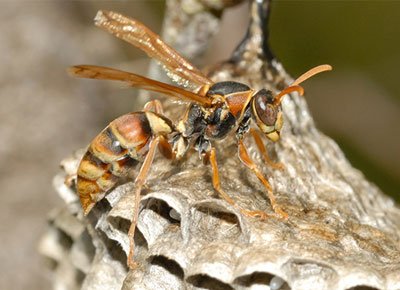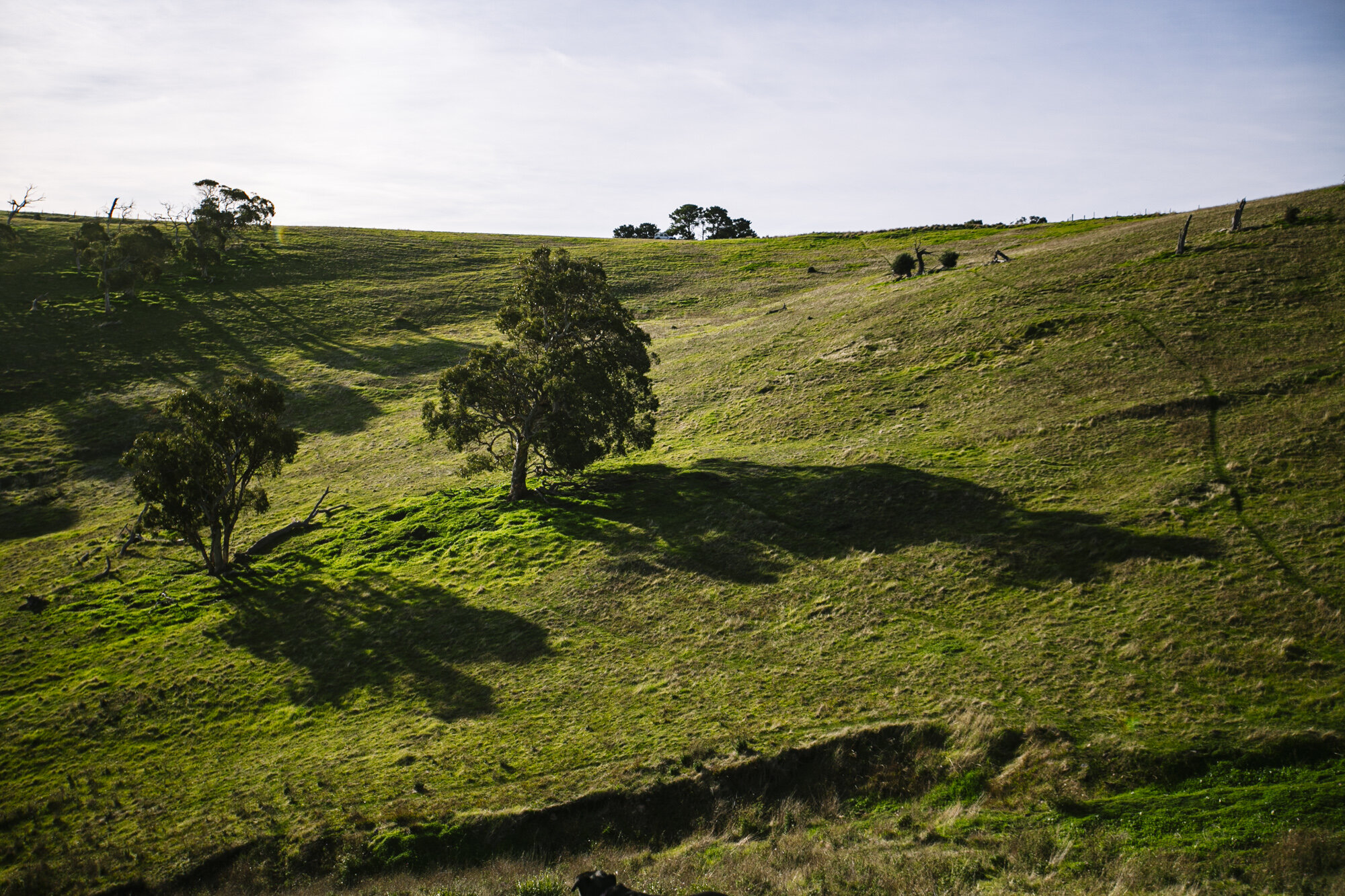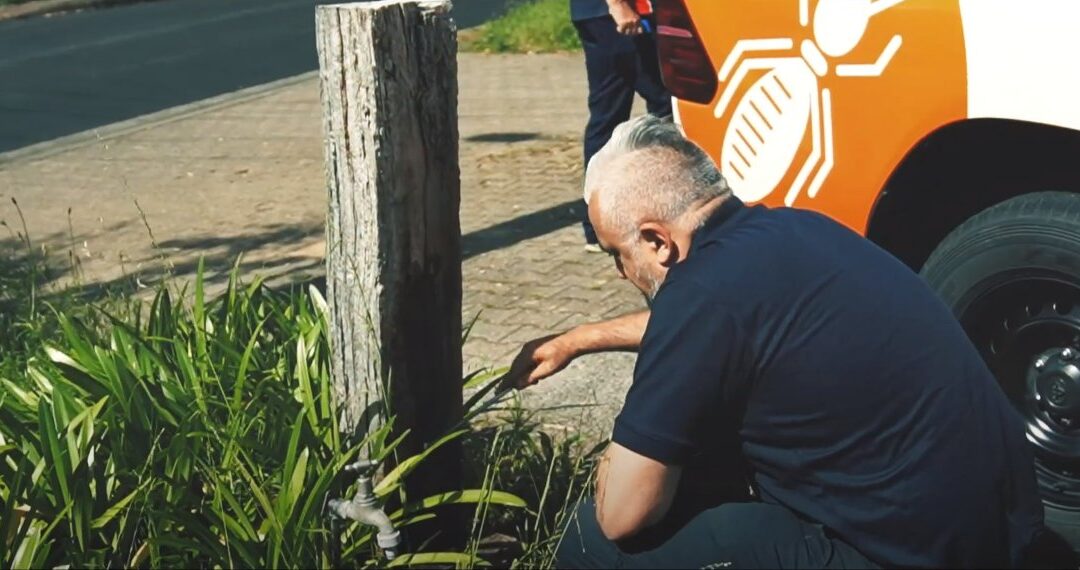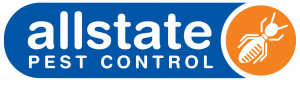
The Ultimate Guide to Wasp Control
THE ULTIMATE GUIDE TO WASP CONTROL
Wasps play a key role in the ecosystem and agricultural industry, but there are plenty of reasons why you’d want them to steer clear of your home or business this summer.
If you suspect that you may have a wasp problem, tour Hivemind article will help you learn more about how to identify wasps, how to prevent them from nesting and how to exterminate them once and for all.
What questions will this article answer?
Why are wasps important?
Wasps pollinate plants and play a crucial role in helping to protect our crops and the agricultural industry.
Why are wasps attracted to my garden?
You may have uncovered sources of food and water, brightly coloured plants, exposed or decaying wood, or a roof with eaves.
Types of wasps
Australia has three main species of wasps: the paper wasp, the mud dauber and the European wasp.
What is the difference between bees and wasps?
Pay attention to their physical appearance, stinging behaviour, food preferences, flying pattern as well as nesting material and location.
Signs of a wasp outbreak
You may notice a larger number of wasps than usual, constant buzzing noises, damaged wooden structures or a wasp nest.
Problems caused by wasps
Wasps cause safety concerns and can trigger serious allergies with their painful stings. Their nests can be difficult to locate, and European wasps are considered a pest in agriculture.
How to prevent wasps
You can use long-range aerosols applied at a safe distance, identify and seal off entry points to your home, perform regular yard maintenance and remove food sources and damaged wood.
Professional wasp removal
Our highly trained team has a thorough understanding of wasp behaviour and is fully equipped to safely handle wasp nests.
Choose Allstate for a reliable wasp removal service
We have a 24/7 wasp emergency callout service that you can count on, no matter if you’re in a residential, commercial or industrial setting. Our wasp treatments start from $187 and are covered by a six-month warranty.
Why are wasps important?
They are excellent predators for other crop-damaging insect pests such as caterpillars, spiders, flies and aphids. This means that wasps play a crucial role in helping to protect our crops and the agricultural industry.
Like bees, wasps also act as pollinators for plants to help maintain our ecosystem. This is very useful as they can step in when there are no bees around.
Some wasp species are known to be very generous by sharing their nests with other insects such as hover flies.
Why are wasps attracted to my garden?
While it’s clear that wasps have a beneficial role in nature, it’s certainly not ideal to have them build a nest on your property. Unfortunately, you may be at higher risk of a wasp attack if you have:
- Uncovered sweet or protein-rich food and drinks left outdoors
- Open bodies of water, such as ponds, fountains or swimming pools
- Brightly coloured foliage, plants or flowers
- Exposed, weathered or decaying wood that can be used to make nests
- Eaves or roof overhangs, which make ideal nesting sites
Types of wasps
There are three main types of wasps found everywhere in Australia. They are generally more active in warmer weather.
Paper wasps
Growing up to a length of 2.5cm, paper wasps have brown wings and a black abdomen with yellow/orange bands, though some are yellow/brown.
They build smaller nests shaped like inverted cones consisting of hexagonal cells made of saliva mixed with wood fragments, which gives them a paper-like consistency and appearance. These nests hang by a stalk underneath eaves and tree branches and hold a maximum of 100-200 wasps.
Mud daubers
Named for their tendency to collect water and mud for their nests, mud daubers or mud wasps come in different sizes with black and orange colouring.
You’ll find their nests attached to walls and ceilings and overhanging rocks in less frequented areas.
These nests are small and divided into individual cells fashioned from mud. Mud daubers put paralysed spiders inside each cell as a food source before laying an egg and sealing off the cell.
European wasps
Considered a pest and more aggressive than native wasps, European wasps are 1-1.5cm in length with a bright yellow body and legs and black triangle-shaped markings.
As an introduced species, European wasps don’t have any natural predators in Australia to keep their population under control.
Their nests can house up to 100,000 wasps and are usually buried underground, with only the opening hole visible.
European wasp nests are oval-shaped and made up of multiple cells arranged in a honeycomb-like configuration.
These nests are covered by a material resembling paper mache or egg cartons, which is the result of chewed wood pulp mixed with saliva.
They fly in a straight line from their food source back to their nest and have a range of 50-250m.
What is the difference between bees and wasps?
To learn more about bees, check out our Hivemind blog here: https://allstatepest.com.au/pests/ultimate-guide-to-bee-prevention/
Given that wasps can be more aggressive and dangerous than bees, you’ll want to know how to identify them as quickly as possible. Here’s what you should look for:
Physical appearance
Bees have a larger body, and most are covered with fine hairs. Wasps have a longer abdomen and more distinct yellow, black or orange markings.
Flying pattern
Wasps fly directly from their food source back to their nest in a zigzag pattern. They do not retract their legs during flight, whereas bees do.
Nesting material, appearance and location
Wasp nests tend to be larger in size, football-shaped and sheltered inside a building or underground. They have a paper-like appearance as they are made of mud or chewed wood mixed with water or saliva.
Beehives are smaller in size, have a more organised, distinct honeycomb pattern and are made of yellow wax. You’ll find them concealed in tree hollows, roof and wall voids, abandoned sheds and thick grass.
Stinging behaviour
Bees can only sting once; wasps, on the other hand, can sting multiple times. They are generally more aggressive and their stings more painful.
Food preferences
Bees feed on honey and pollen, but they are also attracted to overripe fruit and sugary items. Wasps’ diet includes the above, but they also scavenge other small insects, meat, fish, vegetable scraps, pet food and even garbage when necessary.
Worried about wasps? Our expert team is ready to help you now
 or
or
Signs of a wasp outbreak
Pay close attention to the following clues and stay alert to a potential infestation in your home or business:
You notice a large number of active wasps
If you see wasps swarming around a particular area, this is a sign that there may be a nest nearby.
You come across a wasp nest
Look for wasp nests in roof and wall cavities, trees, garages, bird boxes and underneath eaves. They are usually tucked away in sheltered areas but still easy to access. Some nests are located underground or within compost heaps, so don’t forget to check outside.
You see damaged wooden structures
Wasps often use chewed wood to make nests, so pay attention to signs of stripped wooden beams, furniture, fencing, firewood and trees.
They’re noisy
Similar to bees, wasps emit a tell-tale buzzing sound when flapping their wings together during flight. This means that a large swarm will create a pretty loud and constant distraction.
If you have wasps building a nest inside your wall or roof space, you may also hear a tapping noise.
Problems caused by wasps
A wasp outbreak can be dangerous, distracting and disruptive. Here’s why:
Painful stings
Unlike bees, wasps sting multiple times, and many can attack at once. They’ll exhibit this aggressive behaviour if you accidentally disturb their nest. Luckily, most stings can be easily treated with painkillers and a cold compress.
Triggering allergies
Some people can have an allergic reaction to the venom from a wasp sting, which contains a mixture of enzymes, proteins and neurotoxins.
In most cases, the allergies are easily treatable. People who have a history of allergies or have experienced multiple wasp stings must be monitored for a more serious systemic or anaphylactic reaction and require urgent medical attention.
European wasps are a pest
European wasps are notorious for competing with native insects for resources, and as an introduced species, they have few predators to keep their numbers controlled. They can damage crops like grapes and stone fruit and prey on the already dwindling bee population.
Concealed nests
You may have a significant outbreak of wasps and be unable to find the source as it is buried underground or inside a compost heap.
Safety concerns
Outdoor activities and events can be affected by aggressive wasp behaviour, foraging habits and hidden nests. Be extra careful if children are present.
Get safe and effective wasp nest removal today
 or
or
How to prevent wasps
Aerosols are often very useful to deter wasps from returning to their nest, but take care when applying, as they will become aggressive when sprayed. You’ll need to leave the area quickly.
We recommend using a long-range aerosol with a powerful jet nozzle that can spray a large volume of insecticide reaching up to six metres, allowing you to stay a safe distance away from the nest.
You can also follow these suggestions to safeguard your home from wasps:
Identify and seal off entry points to your home
Cover all small openings, gaps, cracks and crevices that permit wasps to crawl inside your roof space or wall void. Consider window and door screens for extra protection.
Maintain your yard regularly
Trim and check tree branches for wasp nests. Keep lawns tidy and mowed, and remove food scraps and fallen fruit.
Remove food sources
If you’re hosting an outdoor event, keep food and drinks covered where possible. Cover pet food and water bowls that are not in use. Seal and secure rubbish bins and compost heaps.
Remove or repair damaged or decayed wood
Many wasps build their nests by stripping and chewing wood they find in your yard.
Professional wasps extermination
At Allstate, we don’t recommend handling wasps yourself, especially if you have allergies or no previous experience. Our team is highly trained to understand wasps, their aggressive behaviour and the safe application of treatment with protective clothing and proper equipment.
When we treat your wasp outbreak, you can expect us to begin with a comprehensive assessment and inspection of your property.
Our treatment plan involves locating the hive, then applying a control dust inside the cavity to manage the colony housed inside and deter other swarms from using the hive. When it is safe, we’ll physically remove the hive from your property.
As it takes time to manage severe outbreaks, we will carefully monitor the progress of the treatment over follow-up visits and refresh the treatment if necessary.
You’ll receive a follow-up report detailing the entire treatment for your reference.
For all urgent callouts, we have an emergency service where we will respond to your concerns within 24 hours.
Our wasp nest removal cost starts at $187, and you can count on our experienced technicians to keep your home or business safe from wasps.
Our expert team is ready to assist you with professional wasp prevention now
 or
or
Choose Allstate for a reliable wasp removal service
From residential to commercial and industrial settings, our experienced team is highly trained and fully equipped to ensure the safe handling of wasps. We use innovative, modern solutions and targeted treatments to keep your home or business safe from wasps for years to come. All the treatments that we use are are non-toxic to children, pets and the environment.
With a six-month warranty on our wasp removal service, as well as payment plans and a money-back satisfaction guarantee, you won’t need to delay any urgent treatment. Contact Allstate today to prevente wasps from your home or business for good.









